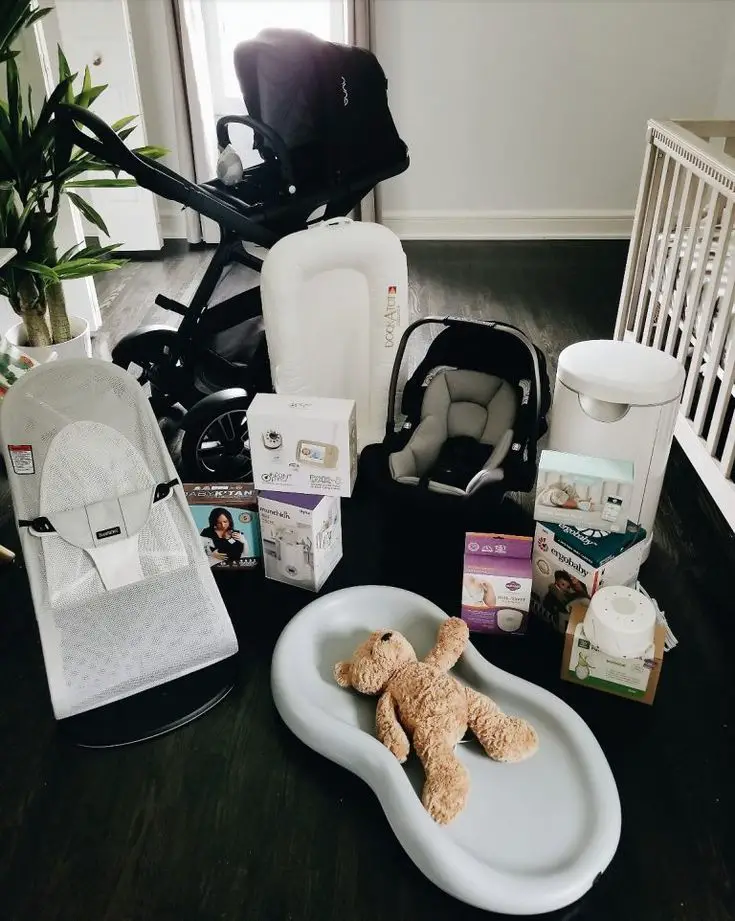Check out these 21 comprehensive pregnancy checklist by trimester for your pregnancy journey.
Each trimester of pregnancy is a journey a woman will experience. It is beautiful, challenging, emotional, full of curiosity and at the same time a joyous phase.
The fear of knowing what to do and how to go about the preparation can be overwhelming coupled with the changes happening to the body.
There is nothing as sweet and interesting as being prepared for each of the stages of the pregnancy because each stage comes with its own unique challenges.
Let us talk about some important and useful information that will help you go through the various stages of pregnancy with ease and also make you feel confident and ready for the journey.
21 ESSENTIAL PREGNANCY CHECKLIST BY TRIMESTER
First Trimester (Weeks 1–12)
Laying the groundwork for a safe, healthy pregnancy.
1. Confirm Your Pregnancy

Source
Once you get a positive home pregnancy test, schedule your first prenatal visit.
A healthcare provider will confirm your pregnancy through urine or blood tests and may perform an early ultrasound to estimate how far along you are.
2. Start Taking Prenatal Vitamins

Beginning prenatal vitamins early ensures you’re getting key nutrients, especially folic acid, which helps prevent neural tube defects in the baby.
It’s best to take them even before conception if possible.
3. Choose a Healthcare Provider

Select a provider who aligns with your birth preferences and needs, whether it’s an OB-GYN, midwife, or family doctor.
This person will be your guide and support system throughout your pregnancy and delivery.
This a one of the pregnancy checklist by trimester you shouldn’t joke with.
4. Calculate Your Due Date

Your due date is typically calculated from the first day of your last menstrual period.
Knowing this date helps you and your provider track your baby’s development and schedule tests and ultrasounds at the right time.
5. Review Medical History and Medications

Go over your medical history and any current medications with your provider.
Some over-the-counter and prescription meds aren’t safe during pregnancy, so adjustments might be necessary.
6. Begin a Pregnancy Journal or App

Journaling or using a pregnancy tracking app can help you keep track of symptoms, moods, questions for your doctor, and your baby’s weekly development.
It can also be a beautiful keepsake.
7. Evaluate Your Diet and Lifestyle

Begin making pregnancy-safe choices by avoiding alcohol, tobacco, and high-risk foods like raw fish or unpasteurized cheese.
Increase your intake of fruits, vegetables, whole grains, and lean proteins to support your growing baby.
Second Trimester (Weeks 13–26)

When many women start to feel their best, and the baby starts showing!
8. Schedule Anatomy Scan (Around 20 Weeks)

This ultrasound is a detailed look at your baby’s organs, limbs, spine, and more.
It can detect structural issues and, if you wish, reveal your baby’s sex.
9. Start Planning Your Maternity Leave

Check your workplace’s maternity leave policy and begin the process of informing your employer.
Planning ahead will help reduce stress later in your pregnancy.
This is a must do pregnancy checklist by trimester you should plan early.
10. Consider Prenatal Classes

Childbirth education, breastfeeding, and newborn care classes can provide you with valuable knowledge and confidence.
Book early, as spots can fill up quickly.
11. Start Shopping for Maternity Clothes

As your belly grows, comfort becomes key.
Invest in maternity jeans, stretchy tops, and supportive bras to accommodate your changing body.
12 Begin a Baby Registry

Create a baby registry with items like a crib, stroller, diapers, clothes, and feeding supplies.
This helps loved ones support you with exactly what you need.
13. Focus on Exercise and Self-Care

Safe, regular exercise like walking, swimming, or prenatal yoga improves circulation, boosts mood, and helps prepare your body for labor.
Don’t forget to rest and relax too.
14. Look Into Childcare Options

If you plan to return to work postpartum, now is a good time to research daycare centers, in-home care, or nanny services.
Quality providers often have long waitlists.
Third Trimester (Weeks 27–Birth)
The home stretch, time to finalize your plans and get ready for the baby’s arrival.
15. Create a Birth Plan

A birth plan outlines your preferences for labor and delivery, such as pain relief options, who you want in the room, and how you’d like the baby cared for afterward.
Share it with your provider.
16. Pack Your Hospital Bag

Prepare a bag with essentials like comfortable clothes, toiletries, snacks, documents, and baby items like a going-home outfit and diapers.
Don’t forget items for your partner or support person too.
This should be part of your pregnancy checklist by trimester.
17. Install the Car Seat

Learn how to properly install your infant car seat before your due date.
Many hospitals require a correctly installed seat to discharge your baby, and local fire departments often offer free safety checks.
18. Finish Baby’s Nursery

Complete your baby’s sleeping and diapering space.
Organize clothes, set up the crib or bassinet, and ensure the area is clean and safe.
19. Plan for Postpartum Support

Arrange for help during the first few weeks after birth, whether it’s from your partner, family, friends, or a postpartum doula.
Having support in place can make a huge difference in recovery and bonding time.
20. Attend Final Prenatal Appointments

As you get closer to delivery, appointments will be more frequent to monitor your baby’s position, heartbeat, and signs of labor.
These check-ins help ensure everything is progressing well.
21. Practice Relaxation and Breathing Techniques
Preparing mentally and emotionally for labor is just as important as the physical prep.

Deep breathing, visualization, or meditation can reduce anxiety and help you cope with contractions when the time comes.
10 MUST-KNOW PREGNANCY TASKS
1. Schedule Your First Prenatal Appointment

As soon as you confirm your pregnancy, make sure to schedule your first prenatal visit.
This appointment is key for assessing your health, confirming your pregnancy, and discussing what to expect in the coming months.
2. Take Prenatal Vitamins

Start taking prenatal vitamins as soon as you find out you’re pregnant, especially those with folic acid.
This is crucial for the early development of your baby’s neural tube and for supporting overall health.
3. Create a Healthy Eating Plan

Focus on eating a balanced diet with plenty of fruits, vegetables, whole grains, lean proteins, and dairy.
Avoid harmful foods like unpasteurized cheese, raw meats, and alcohol.
Proper nutrition is essential for both your health and your baby’s growth.
4. Choose Your Healthcare Provider

Whether you’re seeing an OB-GYN, family doctor, or midwife, choosing the right provider is important for managing your pregnancy and discussing birth plans.
Consider your preferences for delivery and care.
5. Track Your Symptoms and Baby’s Growth

Keep track of how you’re feeling and your baby’s progress.
A pregnancy journal or app can help you note changes in your body, symptoms you experience, and milestones in your baby’s development.
6. Start Preparing Financially for Baby

Review your budget and start planning for the additional costs associated with pregnancy and parenthood.
This includes healthcare expenses, maternity leave, baby supplies, and any child-related costs once your little one arrives.
7. Make a Birth Plan

As you approach your due date, begin to think about your preferences for labor and delivery.
A birth plan can help guide your healthcare team, though remember it’s okay to remain flexible.
8. Take Prenatal Classes

Look into childbirth, breastfeeding, and parenting classes.
These classes can provide vital information and help reduce anxiety as you approach labor and delivery.
9. Arrange Your Baby’s Nursery

Set up a safe and functional nursery.
Ensure the crib is properly set up, and you have essential items like clothes, diapers, and blankets ready for the baby’s arrival.
10. Install the Car Seat Early

Installing your baby’s car seat is one of the most important tasks before giving birth.
Most hospitals require proof of a properly installed car seat to discharge your baby, so it’s essential to do this well in advance.
Going through pregnancy can feel overwhelming at times, but breaking it down into manageable tasks by trimester can help you stay organized, calm, and focused.
With scheduling your first prenatal appointment to installing the car seat before your due date, each task is an essential step in preparing for the arrival of your little one.
Know that every pregnancy is unique, so be sure to listen to your body, seek support when needed, and enjoy this beautiful journey.
By staying proactive and informed, you’ll not only ensure a smoother pregnancy but also set the stage for a wonderful and memorable experience as you prepare to welcome your baby into the world.
|
ReplyForward |